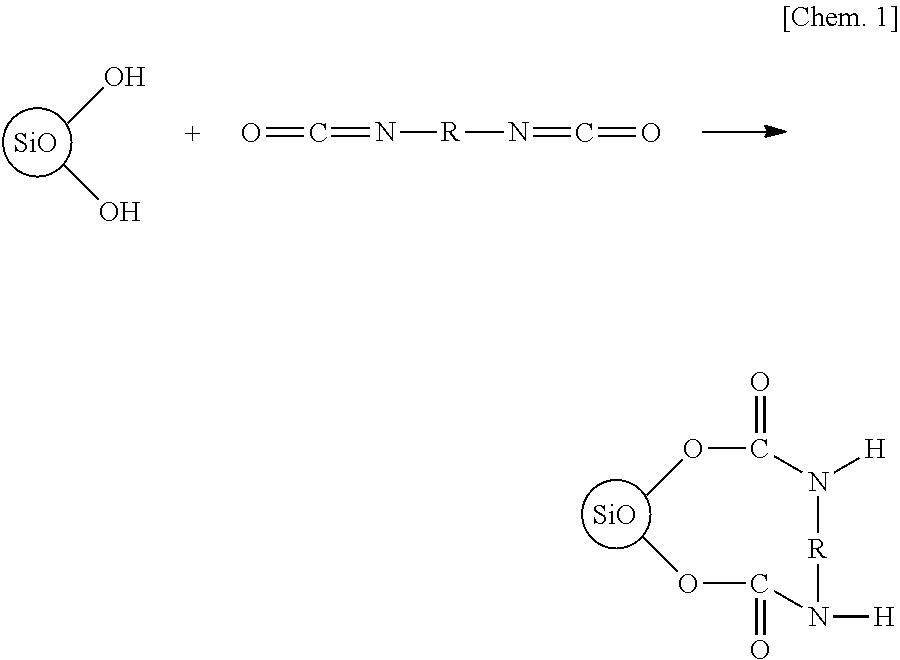Negative electrode for nonaqueous electrolyte secondary battery, method for manufacturing the same, and nonaqueous electrolyte secondary battery
- Summary
- Abstract
- Description
- Claims
- Application Information
AI Technical Summary
Benefits of technology
Problems solved by technology
Method used
Image
Examples
example 1
[0025]A battery was formed in a manner similar to that of the embodiment of the present invention.
[0026]The battery thus formed was called a battery A1.
example 2
[0027]Except that in the surface treatment of SiOx, the rate of HMDI dissolved in DEC was set to 5 percent by mass, a battery was formed in a manner similar to that of the above Example 1. In addition, by the use of a gas chromatography, it was confirmed that all the above HMDI was consumed for the reaction. The same confirmation as described above was also obtained in the following Examples 3 to 6. In addition, the rate of the coating film to the SiOx was 6 percent by mole.
[0028]The battery thus formed was called a battery A2.
example 3
[0029]Except that in the surface treatment of SiOx, the rate of HMDI dissolved in DEC was set to 10 percent by mass, a battery was formed in a manner similar to that of the above Example 1. In addition, the rate of the coating film to the SiOx was 12 percent by mole.
[0030]The battery thus formed was called a battery A3.
PUM
 Login to View More
Login to View More Abstract
Description
Claims
Application Information
 Login to View More
Login to View More - R&D
- Intellectual Property
- Life Sciences
- Materials
- Tech Scout
- Unparalleled Data Quality
- Higher Quality Content
- 60% Fewer Hallucinations
Browse by: Latest US Patents, China's latest patents, Technical Efficacy Thesaurus, Application Domain, Technology Topic, Popular Technical Reports.
© 2025 PatSnap. All rights reserved.Legal|Privacy policy|Modern Slavery Act Transparency Statement|Sitemap|About US| Contact US: help@patsnap.com

